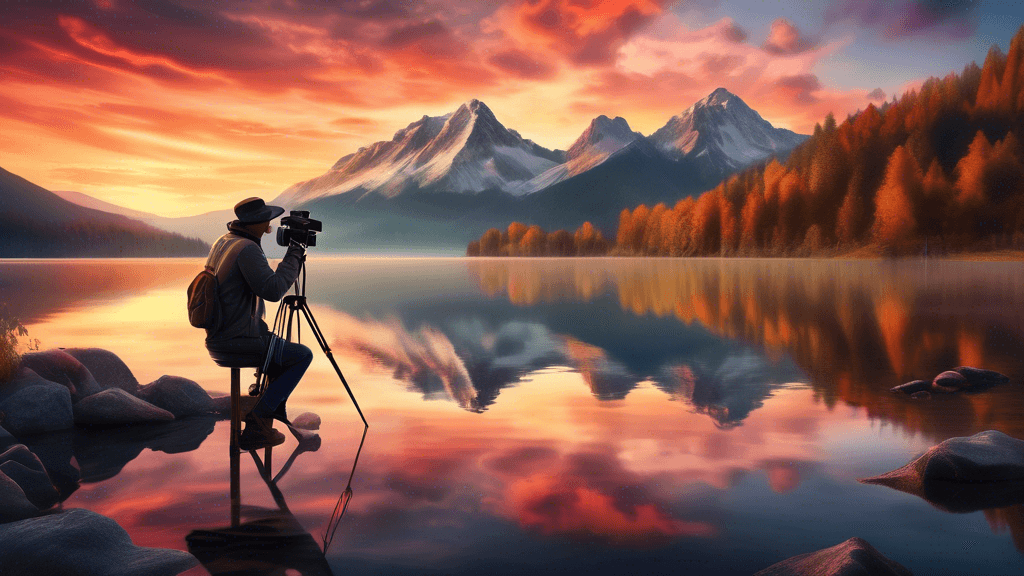
Capturing Reflections: Using Water as Mirrors in Photography
Share
The Magic of Water Reflections in Photography
Have you ever stood by a serene lake and observed how it mirrors the sky and surrounding landscape? Isn't it mesmerizing to see the world flipped in such perfect symmetry? Such is the magic of using water as mirrors in photography, a technique that not only captures the beauty of reflections but also adds depth and a surreal dimension to photographic works. But what makes water reflections so dramatic and eye-catching? And how can photographers—whether amateur or professional—utilize this natural phenomenon to create stunning images?
Understanding the Science Behind Water Reflections
Reflections occur when light bounces back from a surface at the same angle at which it hits it. Water, with its natural reflective surface, provides a perfect medium for this phenomenon. However, the clarity and quality of the reflection depend on several factors:
- The stillness of the water – Calm water creates clearer reflections.
- The angle of light – Low-angled light, like that during sunrise or sunset, enhances reflections.
- The viewpoint of the photographer – Changing the angle from which the photograph is taken can dramatically alter the reflection’s appearance.
Capturing reflections in photography is not just about finding the right body of water; it's also about understanding how light interacts with that water, points out Emma Johnson, a renowned landscape photographer.
Choosing the Right Equipment
While you don't need overly sophisticated gear to capture reflections, the choice of lens and camera settings can significantly affect the outcome. A standard or wide-angle lens can often capture more of the landscape and its reflection, creating a grand, dramatic effect. Using a tripod is also advisable to keep the camera steady and ensure the reflected images are as sharp as possible.
Composition Techniques to Enhance Water Reflections
The composition of your photograph can either make or break the effectiveness of a reflection. Here are a few tips to enhance water reflections in your compositions:
- Symmetry: Centering the horizon can work exceptionally well for highly symmetrical reflections, giving the image a balanced and harmonious feel.
- Leading Lines: Use the shore, a row of trees, a pathway, or any natural lines to lead the eye into the reflection and beyond.
- Foreground Interest: Including elements like stones, leaves, or flowers in the foreground can add depth to your reflections and the overall image.
Mastering the Art of Timing
Photography is often about capturing the right moment, and this couldn’t be truer than when shooting water reflections. The time of day not only affects the light quality but also the water’s character. Early morning or late afternoon are preferred as the light is golden and the water is usually calmer. Weather conditions also play a crucial role; for instance, just after rain, you can find puddles that serve as new reflective surfaces.
The ephemeral nature of reflections requires patience and persistence from the photographer, says Michael Thompson, a professional nature photographer noted for his dynamic use of water reflections.
Environmental Considerations
While pursuing the perfect shot, it's crucial for photographers to respect the natural environment. This involves sticking to paths and public areas, not disturbing local wildlife, and practicing leave no trace ethics. As artists, photographers hold a responsibility not only to showcase the beauty of the planet but also to participate in its conservation.
Using water as mirrors in photography enables us to see and capture the world in unique and evocative ways. From the grand reflective surfaces of lakes and oceans to the smallest puddle in a city street—every reflective surface has a story to tell. Are you ready to explore the reflective landscapes around you and create your own mirrored masterpieces? Remember, the only limit is your creativity and your willingness to observe and experiment.
Why not venture out today, equipped with your camera and a new perspective, ready to capture the dual worlds that reflections so beautifully offer? Let your creativity flow through the lens and reflect your vision of the world.





